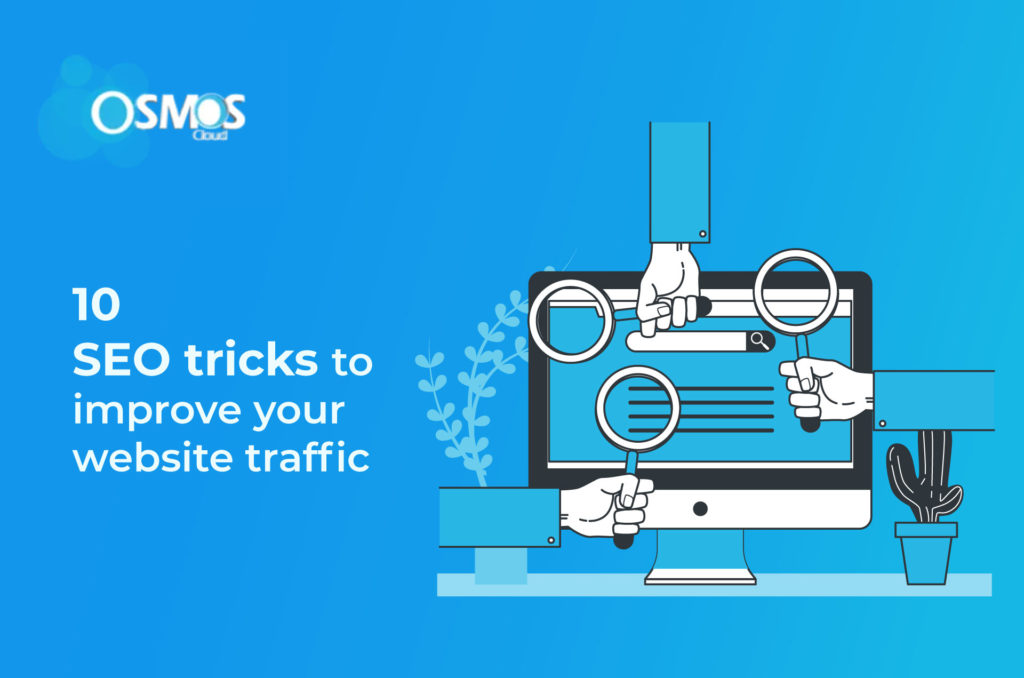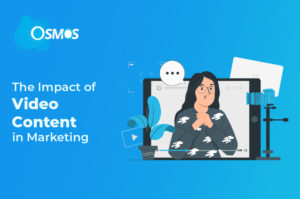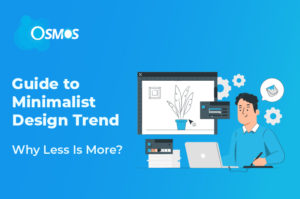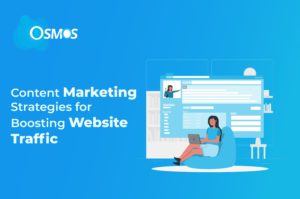Are you looking for ways to improve your website traffic? SEO is a great way to boost visibility and attract more visitors. Read on to learn 10 SEO tips to help you get the most out of your online presence and increase your website traffic.
You can significantly improve your website traffic by following the 10 SEO tips above. SEO is an important part of any digital marketing strategy and should not be overlooked. Optimizing for both on-page and off-page SEO factors can increase organic search engine rankings and drive more qualified visitors to your website.
Doing this consistently over time will help you build an online presence that stands the test. By focusing on SEO, you can get the most out of your website and maximize its potential for generating leads and sales.
When it comes to improving website traffic, SEO is one of the best tools at your disposal. You can quickly and easily make your website more visible to potential customers with a few simple steps and the right techniques. Take advantage of these tips today and watch your website traffic soar!
Overview of SEO Tips to Improve Website Traffic
If you want to increase your website traffic, SEO is one of the most important tactics you can use. By implementing a few simple SEO tips, you can gain more visibility and make sure that as many people see your website as possible.

Here are 10 SEO tips to improve your website traffic:
1. Make Site Speed A Priority
When it comes to SEO, page speed is a critical factor in the success of any website, as faster load times mean higher engagement and better user experience. This impacts your ranking in search engine results pages (SERPs), as Google takes page speed into account when ranking websites. A Content Delivery Network (CDN) can help optimize page speed, providing a way to store and deliver content from multiple global data centers.
What Should You Look For In A CDN?
When choosing a CDN, look for one that offers features like caching and compression tools to reduce latency, speed up the delivery of static files such as images and CSS, and improve overall performance. Additionally, consider if the CDN has any geographic restrictions, as this can affect the speed of delivery for visitors from different parts of the world. Lastly, look into how reliable and secure the CDN is, as this will ensure your website is up and running without any hiccups.
Overall, prioritizing site speed by utilizing a good quality CDN can help improve website traffic and ranking in SERPs. This, combined with on-page SEO optimization such as AMP (Accelerated Mobile Pages) and keyword research, can be a great way to kickstart your SEO efforts and get your website noticed.
2. Keep Your Site Pages Consistent
Having consistent page layouts and content throughout your website can help users find the information they need more easily. Keeping your site design and navigation simple will ensure visitors know where to look for specific content.
Additionally, having a consistent structure of headings and subheadings will make it clear how information is organized on each page. This will help search engines understand the context of your page content and make it easier for visitors to find the information they need.
It’s also important to have consistent branding across all pages so that visitors recognize your brand no matter where they are on your site. This will help build trust and ensure a good user experience.
Consistent Design
Having a consistent design on all your website pages will create a strong visual identity and make it easier for people to navigate your site. This includes using the same color scheme, fonts, images, buttons, and icons across your pages. The consistent design makes it easier for search engines to crawl and index your pages effectively.
Additionally, when users recognize the same design elements on your pages, it reinforces the feeling that they are on the same website. This makes people more likely to explore other pages, increasing their chances of taking the desired action, such as making a purchase or signing up for a mailing list.
Keeping your website content and design consistent can help improve user experience and increase website traffic. Ensure you have a clear structure for your page content and consistent branding and design elements throughout your site. This will help make it easier for users to find the information they need on your website and boost website visibility with search engines.
3. Use A Responsive Design
Responsive web design is a type of web design that displays content in an optimized way across different devices. It automatically adjusts the layout of your website to fit the size and capabilities of the device being used, whether it’s a laptop, tablet, or smartphone.
What Is Responsive Web Design?
Responsive web design is an approach to web design that focuses on providing an optimal viewing experience for users, no matter what device they use. This includes adjusting the layout, font size, and other website elements depending on the device used.
Why Is Responsive Web Design Important?
Responsive web design is essential because it allows users to access your website from any device and still get the same level of experience. This is especially important in today’s world, where more people are accessing websites from their phones and tablets than ever before.
How Can You Implement Responsive Web Design?
Implementing responsive web design can be done using a combination of HTML, CSS, and JavaScript. You can also use frameworks like Bootstrap or Foundation to help you quickly and responsively build your website. Once the design is set up, it’s essential to constantly test it on different devices and screen sizes to ensure everything looks correct. Doing this will help ensure that your website looks great and provides users with an optimal experience, no matter their device.
4. Identify The Best Web Hosting And CMS
When it comes to SEO, one of the most important decisions you can make is choosing the best web hosting and content management system (CMS) for your website. Selecting high-performance hosting solutions that are tailored to fit your specific needs will not only increase page load speed but also help give your website a better chance at higher search engine rankings. Additionally, a reliable CMS will help you create and publish content quickly and easily.
5. Prioritize The User Experience
User experience (UX) is critical when optimizing for search engines. Ensure your website follows best practices such as intuitive navigation, clear call-to-actions, helpful visuals, etc. By providing visitors with an enjoyable and efficient browsing experience, you can encourage them to stay longer and return more often, both of which are considered by search engine algorithms when ranking sites.
6. Keep It Simple
Simplicity is critical when designing a website with SEO in mind. You should opt for an uncluttered design that is easy to navigate and understand. Avoid flashy distractions and focus on creating an intuitive experience that helps visitors quickly find what they’re looking for.
7. Remember Hick’s Law
Hick’s Law states that the more choices a person needs to make, the longer it will take them to do so. Visitors may be overwhelmed and leave if your website has too many options. To avoid this, you should limit the number of choices available to visitors at any given time.
Best Practices
It’s essential to stay up-to-date with best practices regarding SEO. Ensure your website adheres to Google’s latest guidelines regarding page speed, meta tags, image optimization, etc. Additionally, ensure your website is mobile-friendly and uses proper schema markup to take advantage of the opportunities available through search engines fully.
8. Use Social Proof
Social proof is a powerful tool for SEO because it helps build trust with potential customers. Incorporate customer reviews and testimonials on your website and customer-generated content like photos and videos. This helps visitors better understand the products or services you offer and encourages them to stay longer on your website.
9. Comply With Privacy Laws
It’s essential to stay up-to-date with global privacy laws such as GDPR and the CCPA when optimizing for SEO. Make sure your website is compliant and follows all the necessary regulations. Additionally, provide visitors with an easy-to-read privacy policy outlining how their data is collected and used.
10. Remember The “F” Pattern
The F pattern refers to how people scan web pages, usually starting at the top left corner and moving down in an “F” shape. To take advantage of this, you should structure your website to encourage visitors to follow the F pattern and view important information first.
Frequently Asked Questions
How Does The F Pattern Help Websites?
The F pattern helps websites by providing users with a more intuitive browsing experience. Arranging content in an “F” shape makes essential information easier to find and encourages visitors to stay longer on the page. Additionally, this type of structure can help search engine algorithms better understand what your page is about and provide it with a higher ranking.
Why Use The F Pattern?
Using the F pattern when designing websites improves visibility, increases engagement, and encourages visitors to stay longer. Additionally, it helps search engine algorithms understand the content and gives them a better understanding of your page.
How Do I Apply The F Pattern?
When applying the F pattern to websites, make sure you place important information at the top left corner and structure content in a way that encourages visitors to skim. Additionally, use visuals such as images and videos to break up the text and make it easier for visitors to digest. Finally, add navigation links above the fold so visitors can easily click through to other pages on your website.







